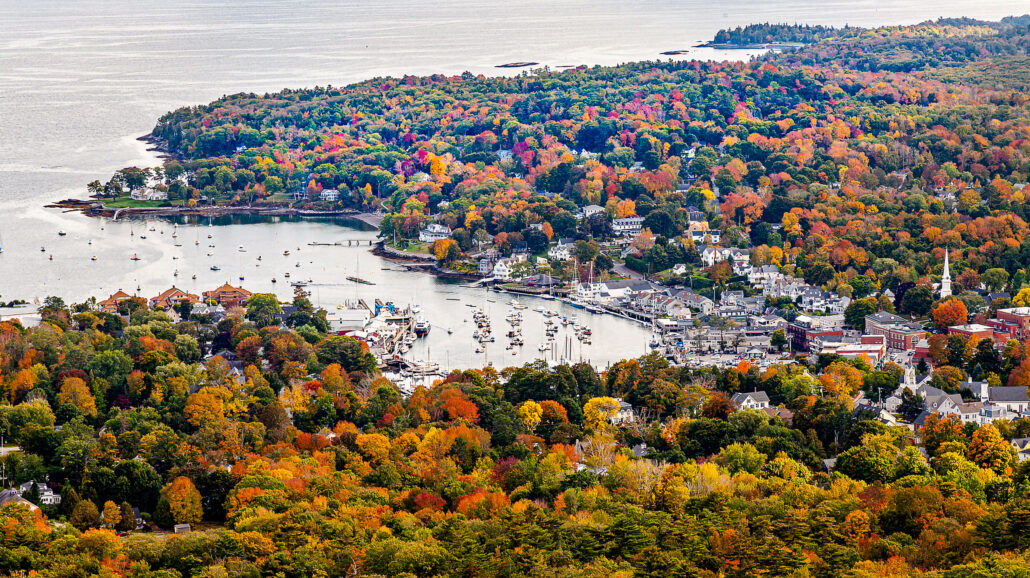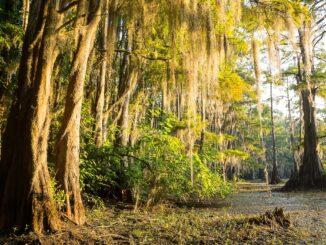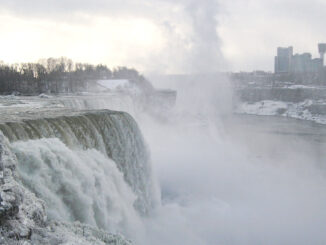
Maine’s state parks are getting badly needed upgrades thanks to a $50 million cash infusion.
A large portion of the funds will be spent next year as Maine’s parks authorities ramp up work to update and rebuild infrastructure, especially at campsites. The money arrives just in time, too. The state’s park facilities are suffering from decades of neglect but are getting used more than ever before.
As in other states, Maine’s state park system is groaning under the strain of millions of additional visitors spending time in them. But state officials told Public Parks that the $50 million won’t go nearly as far and wide as they hoped due to rising prices.
“We initially had projects in just about every park, but things, unfortunately, are ending up costing a lot more than we had anticipated given inflationary forces,” said Andy Cutko, Director of Maine’s Bureau of Parks and Lands, in an interview. “We started out with a proposed list of up to 300 different projects. I think what we’re realizing now is we’re going to be far from that in terms of getting projects done.”
Officials have been able to move forward with work on some of the projects on the Bureau’s list.
At Reid State Park, a popular coastal attraction about a one-hour drive south of Augusta, officials spent $400,000 to replace an old bridge that couldn’t accommodate heavier vehicles. About $1,350,000 was spent at Camden Hills State Park for a major renovation of a road network that hadn’t seen needed improvements for decades.
The $50 million earmarked for state park revitalization work was disbursed by the pandemic-era Maine Jobs and Recovery Plan, which allocated new money that arrived thanks to the federal American Rescue Plan Act. ARPA was enacted by the US Congress to help facilitate the country’s post-pandemic economic recovery. The ARPA bill “delivers $350 billion to state, territorial, local, and tribal governments across the country to support their response to and recovery from the COVID-19 public health emergency,” per the US Department of the Treasury.
Because of the funds’ ties to pandemic-related government spending, Maine plans to spend much of its $50 million gift on improving sanitation at campsites.
“The focus is primarily on campgrounds,” said Ron Hunt, the Bureau of Parks and Lands’ Director of Operations and Maintenance. “We’re replacing aged restroom facilities that in some instances are nearly 50 years old.”
Sharing the wealth
Cutko said their initial vision was to spend money at all of Maine’s 48 state parks, but he says that’s no longer feasible given recent cost increases.
His office has been forced to prioritize, ensuring that funds are allocated to the parks with the most visitors and the most needed repairs. Some money also has to be spent on replacing aging equipment, like lawnmowers and off-road vehicles.
But Hunt said they are doing their best to ensure money is distributed evenly and fairly to as many areas of the state as possible.
“We’re sort of all over the map,” he said. “We’re trying to make certain projects are spread all around the state and at all of our parks as much as possible, while realizing that not all of them are going to receive monies. But we’re trying to do varying projects with varying complexities at those areas.”
Some of the projects being highlighted by Maine’s Department of Agriculture, Conservation and Forestry include work at Camden Hills to “re-pave and replace culverts on the road to Mt. Battie, pave parking lots, create accessibility trails at Mt. Battie Summit, [and] improve/enhance hiking trails.”
Funds outside ARPA will also be spent to clear up storm damage at Lily Bay State Park campgrounds, while boat launches and parking will be improved at the Colonial Pemaquid State Historic Site. And the list goes on. “Many other projects are in the design and engineering phases, and construction will occur in 2024,” according to a DACF release.
The officials told Public Parks that they will have access to additional funds once the full $50 million is spent. Additional revenues will be needed to ensure that parks can keep their brand-new facilities and equipment maintained and in working order.
As Cutko explained it, before the current spending push, all the money that the state park received from entrance fees went into a state general fund, meaning revenue from entry fees was not dedicated strictly to state park use. A new law now caps the amount diverted to the general fund, freeing the remaining portion for the state park system to tap into.
Cutko added that these funds can then be leveraged to win matching federal dollars. The change in how park fees are allocated will take effect in January 2026.
A surge of visitors
Aside from the need to maintain aging infrastructure and repair crumbling roads, funds are needed to tackle a record number of park visits, a story that’s being played out all over the country.
“We at many of our open spaces and parks have had a huge surge in visitations during the pandemic,” Cutko said. “We broke records for public use in 2021 and 2022.”
He estimates that Maine’s state parks are receiving 1 million more visitors each year than they did only a decade ago. Little was spent on improving the parks or on hiring personnel to manage the influx. He described one episode where a popular beach park saw over 2,000 visitors in one day while only one staff member was on hand to manage things.
Managing people can prove just as challenging as managing facilities and equipment. New technology can help.
Social media is in part fueling interest and driving visitor numbers higher. But Cutko said his team is learning how to use social media to somewhat control the influx. For instance, the state parks can now put the word out on X (formerly known as Twitter) when parking lots are full or when campsites are fully booked. He said there is talk about introducing a timed entry system to control congestion, but so far, they haven’t had to resort to measures like that.
DACF says that last year saw a record 3.28 million people spending time at Maine’s 48 scattered state parks. The department says the parks’ popularity helped the state generate some $100 million in revenue that year, but more funds will be needed should visitor numbers continue to rise.
“The growing popularity of the parks underscores the need for significant investments to maintain their appeal and meet the rising demand for outdoor recreation opportunities,” DACF said.
Cutko says his agency is happy for the ARPA-tied money his staff is now burning through. However, he admitted that they could use plenty more. “We are quickly realizing that…our needs far exceed $50 million,” he said.
©2025 Public Parks



